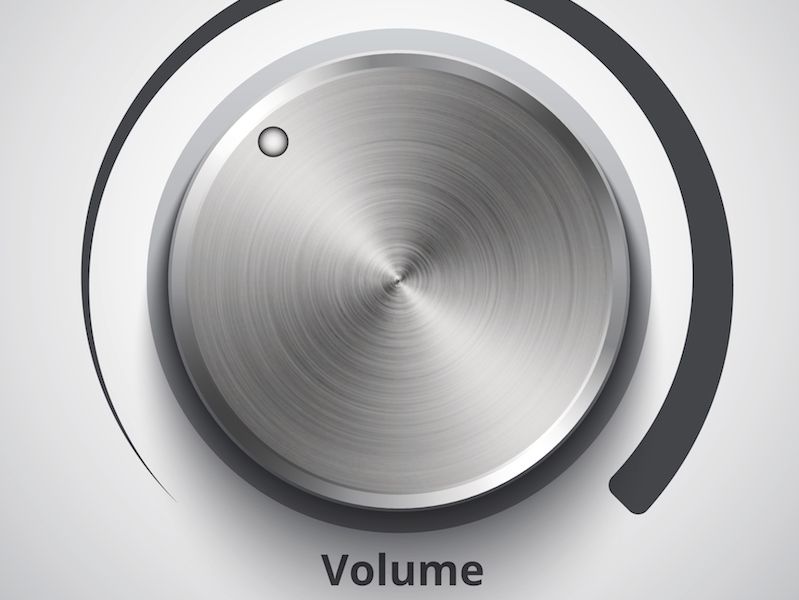
You ever go to the beach and noticed one of those “Beware of Shark” warning signs? It’s not exactly a warning you ignore. You may even reconsider swimming at all with a sign like that (if the sign is written in big red letters that’s particularly true). But people usually don’t pay attention to warnings about their hearing in the same way for some reason.
Recent studies have found that millions of people ignore warning signs when it comes to their hearing (there’s no doubt that this is a global problem, though this research was specifically conducted in the United Kingdom). Awareness is a big part of the problem. Fear of sharks is pretty intuitive. But fear of loud noise? And how do you know how loud is too loud?
Loud And Dangerous Sound is All Around us
It isn’t just the machine shop floor or rock concert that present dangers to your ears (not to downplay the hearing hazards of these situations). There are potential risks with many every-day sounds. That’s because exposure time is as dangerous as the volume. Your hearing can be harmed with even low level noises like dense city traffic if you experience it for more than a couple of hours at a time.
keep reading to find out when sound becomes too loud:
- 30 dB: This is the volume level you would expect of normal conversation. You should be just fine around this volume for an indefinite period.
- 80 – 85 dB: An air conditioner, heavy traffic, and a lawnmower are at this volume. After around two hours this level of sound becomes damaging.
- 90 – 95 dB: A motorcycle is a practical illustration of this sound level. 50 minutes is enough to be unsafe at this volume.
- 100 dB: An approaching subway train or a mid-sized sporting event are at this volume (of course, this depends on the city). This volume can become hazardous after 15 minutes of exposure.
- 110 dB: Do you ever crank the volume on your earpods up as high as it will go? That’s normally around this volume on most smartphones. 5 minutes will be enough to be unsafe at this volume.
- 120 dB and over: Anything over 120 dB (think loud rock show or extremely large sporting events) can produce instant damage and pain in your ears.
What Does 85 Decibels Sound Like?
Generally, you’re hearing is in danger when you’re experiencing any sound 85 dB or above. The problem is that it isn’t always apparent just how loud 85 dB is. It’s not tangible in the way that a shark is tangible.
And hearing cautions frequently get neglected because of this particularly when the sound environment isn’t loud enough to cause pain. Here are a couple of possible solutions:
- Download an app: Your ears can’t be directly safeguarded with an app. But there are several free apps that can function as sound level monitors. Injury to your ears can happen without you recognizing it because it’s difficult to recognize just how loud 85 dB feels. Utilizing this app to monitor sound levels, then, is the solution. Using this strategy will make it more instinctive to recognize when you are going into the “danger zone”. (and you will also discern right away when things are getting too noisy).
- Suitable signage and training: This particularly relates to the workplace. Training and signage can help reinforce the significant hazards of hearing loss (and the advantages of hearing protection). Signage could also let you know just how loud your workspace is. Training can tell employees when hearing protection is necessary or recommended.
If You’re in Doubt, Protect Yourself
Signage and apps aren’t a foolproof answer. So take the time to safeguard your hearing if you have any doubt. Over a long enough duration, noise damage will almost certainly create hearing issues. And nowadays, it’s never been easier to injure your ears (all you need to do is turn your headphone volume up a little too high).
If you’re listening to headphones all day, you should not turn up the volume past the half way. You require noise blocking headphones if you are constantly turning up the volume to block out background sound.
That’s why it’s more important than ever to identify when the volume becomes too loud. Increasing your own knowledge and awareness is the key if you want to do that. It’s not difficult to reduce your exposure or at least wear ear protection. But you have to know when to do it.
That should be easier today, too. That’s even more accurate now that you have some insight.
Think you might have hearing loss? Make an appointment.
[blogcta]
